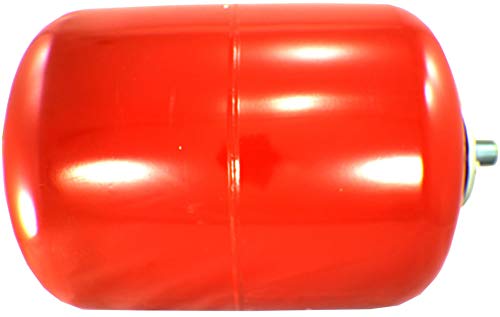In our step-by-step guide on “How to monitor the performance of a solar thermal energy system,” we provide a comprehensive overview of the process involved in monitoring the performance of these systems. Solar thermal energy systems use sunlight to heat a fluid, usually water or a heat transfer fluid, which can then be used for various applications like heating water, space heating, or even generating electricity.
The purpose of this guide is to equip individuals or organizations with the knowledge and tools necessary to effectively monitor the performance of their solar thermal energy systems. By monitoring the system, one can assess its efficiency, identify potential issues or areas for improvement, and ensure optimal functionality.
Throughout the guide, we present a clear and concise step-by-step approach. We begin with an introduction to the basics of solar thermal energy systems, highlighting their components and the general principles behind their operation.
Next, we delve into the importance of monitoring and why it is crucial for maintaining the system’s performance. We outline various parameters and metrics that need to be considered, such as temperature differentials, flow rates, and energy output.
We then provide practical steps on how to set up a monitoring system, including the installation of sensors, data loggers, and other necessary equipment. We also discuss the importance of data collection and explain how to interpret and analyze the gathered data effectively.
Furthermore, we share tips and best practices for troubleshooting common issues and optimizing the performance of a solar thermal energy system. This includes addressing potential challenges like scaling, leaks, or poor insulation.
Lastly, we emphasize the significance of regular maintenance and ongoing monitoring to ensure the long-term durability and efficiency of the system.
Our step-by-step guide on monitoring the performance of a solar thermal energy system offers a valuable resource for anyone looking to maximize the benefits of this renewable energy solution.
Top-selling solar thermal energy systems
Determine the Monitoring Parameters
To determine the monitoring parameters of a solar thermal energy system, we need to identify the key factors that need to be tracked. These include:
- Temperature: Monitor the temperature of the solar collector to ensure optimal performance and prevent overheating or freezing.
- Pressure: Keep an eye on the pressure within the system to maintain proper operation and prevent any damage or leaks.
- Flow Rate: Measure the flow rate of the heat transfer fluid to ensure it is circulating at the desired rate for efficient heat transfer.
- Energy Output: Track the energy output of the system to assess its performance and determine its overall efficiency.
By monitoring these parameters, we can assess the system’s performance, diagnose any issues, and make necessary adjustments to optimize its operation.
Select Monitoring Equipment
To choose the appropriate monitoring equipment based on the parameters identified in step 1, consider using sensors, data loggers, and monitoring software. Determine the specific parameters you need to monitor, such as temperature, humidity, or light levels. Then, select the corresponding sensors, such as a temperature sensor or a light sensor, and connect them to a data logger that can record and store the sensor data. Finally, choose monitoring software that is compatible with your data logger and allows you to analyze and visualize the collected data, such as GraphPad or MATLAB.
Install Monitoring Equipment
To properly install the monitoring equipment in a solar thermal energy system, begin by selecting the relevant points where the sensors should be placed. These points may include the solar collector, storage tank, and heat exchanger. Once you have identified the locations, ensure that the sensors are correctly calibrated according to the manufacturer’s instructions. Next, connect the sensors to the data loggers using appropriate cables or wireless connections. Double-check all connections to ensure they are secure and functioning properly. Finally, turn on the data loggers and verify that they are recording the data accurately.
Example:
- Select the ideal spot for the sensor on the solar collector, preferably on the outlet pipe.
- Follow the manufacturer’s instructions to calibrate the sensor accurately. This may involve adjusting temperature offsets or setting the appropriate range.
- Connect the sensor to the data logger using the provided cable, making sure to match the correct terminals.
- Secure the connection by tightening the connectors but avoid overtightening.
- Repeat steps 1-4 for the sensors on the storage tank and heat exchanger.
- Turn on the data loggers and check that they are successfully recording the data from all sensors.
- Periodically monitor the data loggers to ensure they continue to function properly.
Configure Monitoring System
To set up the monitoring system, configure the data loggers and software. Begin by defining the parameters that need to be monitored, such as temperature, humidity, or pressure. Next, set up the data logging intervals, which determine how frequently the measurements will be taken. Make sure to specify the time intervals that are most relevant for your application.
Collect and Analyze Data
To collect and analyze data effectively, follow these steps:
- Start collecting data: Begin by obtaining data from the monitoring system. This could include various metrics such as website traffic, sales figures, customer feedback, or any other relevant data points.
- Analyze data regularly: Make it a habit to regularly analyze the collected data. This will help you identify patterns, trends, and anomalies in the data. Use tools such as spreadsheets or data visualization software to assist with analysis.
- Monitor trends: Look for recurring patterns or trends in the data over time. For example, you may notice a consistent increase in website traffic during certain periods or a decline in customer satisfaction ratings during a particular season.
- Identify deviations: Keep an eye out for any unexpected deviations from expected performance. These could indicate issues or opportunities that require action. For instance, a sudden drop in sales could prompt you to investigate the cause and take corrective measures.
Remember, consistent data collection and analysis is vital for making informed decisions and optimizing performance. By regularly monitoring trends and identifying deviations, you can stay on top of your data and take proactive steps to improve your outcomes.
Interpret Data and Take Action
To interpret the collected data for the solar thermal energy system’s performance, analyze the gathered information and identify any issues or inefficiencies. Review the data thoroughly, looking for patterns or anomalies that may indicate a problem. If any issues or inefficiencies are detected, take appropriate action to address them promptly. This may include adjusting system settings, conducting maintenance or repairs, or seeking professional assistance if needed. Keep track of the actions taken and monitor the system’s performance to ensure improvements are effective.
Maintain and Calibrate Monitoring Equipment
Regularly maintain and calibrate your monitoring equipment to ensure accurate and reliable data. Follow the manufacturer’s guidelines for maintenance and calibration procedures. Clean equipment surfaces using a gentle, non-abrasive cleaner, and replace any worn or damaged parts. Perform regular calibration checks using a known reference source and adjust the equipment if necessary. Keep a record of all maintenance and calibration activities for future reference.
Continuously Monitor and Optimize
To continuously monitor and optimize the performance of the solar thermal energy system, start by regularly checking the temperature and pressure readings on the control panel. Additionally, visually inspect the system for leaks, blockages, or any physical damage. If necessary, adjust the flow rate, check the insulation, and clean the solar collectors to maintain maximum efficiency and output. Keep a record of any adjustments made and their corresponding impact on the system’s performance for future reference and troubleshooting.
Key Takeaways
In conclusion, monitoring the performance of a solar thermal energy system is essential for its optimal operation and efficiency. In this guide, we have discussed the key steps and tools involved in monitoring a solar thermal energy system. We highlighted the importance of regularly monitoring and analyzing system parameters such as temperature, pressure, and heat output. By doing so, system owners can identify any issues or inefficiencies early on and take appropriate measures to optimize performance. Monitoring also allows for data collection and analysis, which can help in making informed decisions for system improvements. Therefore, by actively monitoring and optimizing the performance of a solar thermal energy system, we can ensure its long-term reliability, maximize energy production, and minimize maintenance costs.
Necessary Tools & Materials
Efficient Monitoring Methods
Operating and Maintaining Solar Thermal Energy Systems
- Understand the Basics: Before using solar thermal energy systems, it is essential to have a basic understanding of how they work. Solar thermal energy systems harness the sun’s energy to heat water or air. They consist of collectors, which absorb sunlight, and a storage tank or heat exchanger to store and distribute the heated fluid
- Assess Your Needs: Determine your specific needs for hot water or space heating. Solar thermal energy systems are primarily used for water heating purposes, but they can also be used for space heating in certain applications. Assess your energy consumption and heating requirements to find the appropriate size and type of system for your needs
- Choose the Right System: There are various types of solar thermal energy systems available, such as flat plate collectors and evacuated tube collectors. Research and consult with experts to select the system that best suits your climate, space, and budget
- Installation and Integration: Seek professional advice for the installation of your solar thermal energy system. Proper installation and integration with existing heating systems are crucial for optimal performance and efficiency. Ensure that there are no shading issues and that the system is placed in a location with maximum exposure to sunlight
- Regular Maintenance: Like any other system, solar thermal energy systems require regular maintenance to ensure long-term efficiency and functionality. Inspect and clean the collectors periodically, check and repair any leaks or damaged components, and maintain the proper fluid levels. It is also important to monitor the system’s performance to identify any potential issues promptly
- Remember that utilizing solar thermal energy systems can significantly reduce your reliance on conventional energy sources, resulting in energy savings and a smaller carbon footprint


















